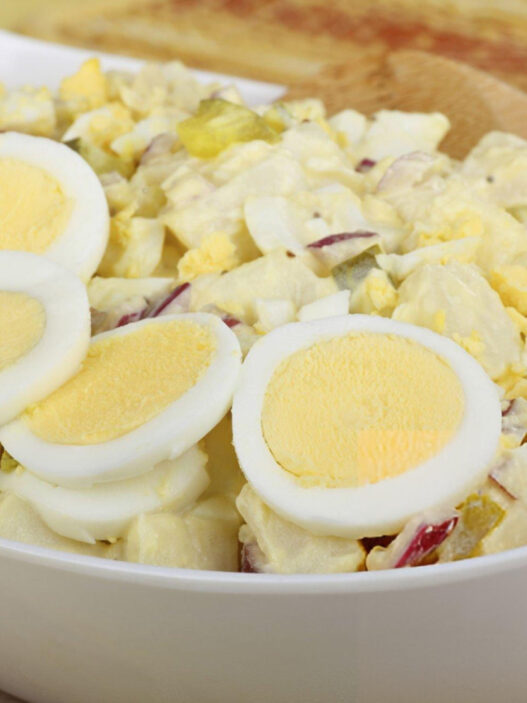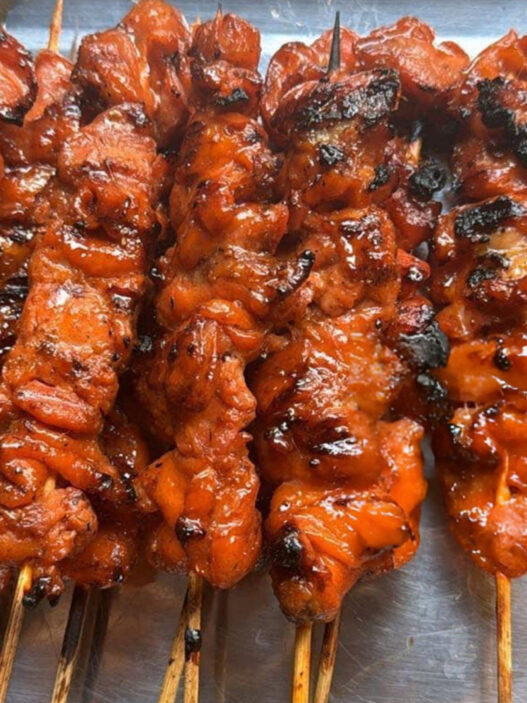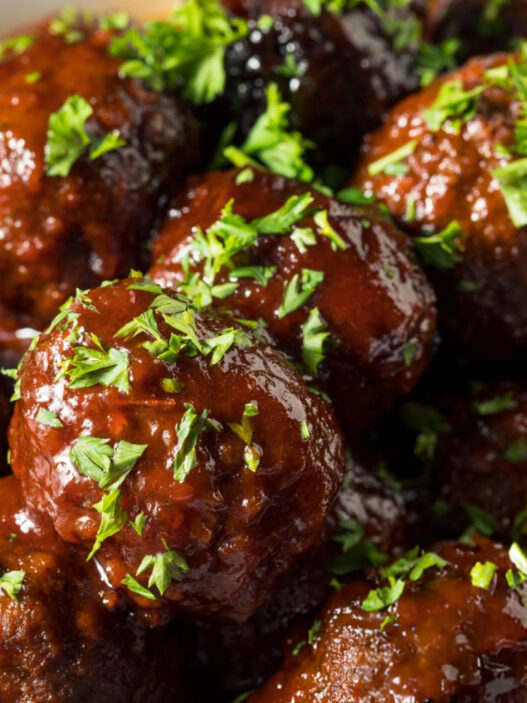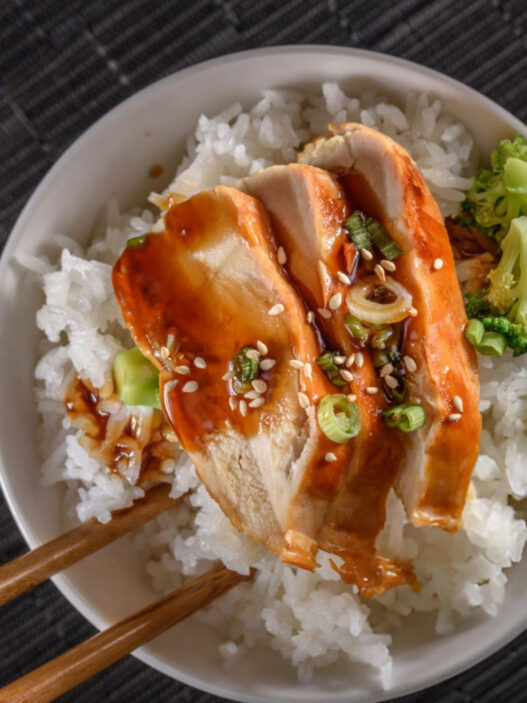Lontong Sayur is comfort in a bowl—creamy, fragrant coconut curry brimming with a colorful mix of vegetables, protein-packed tofu, and rich, savory anchovy paste. Every spoonful delivers warmth and balance, where mild heat, sweetness, and spice meet tender rice cakes that soak up the bold flavors like a sponge.
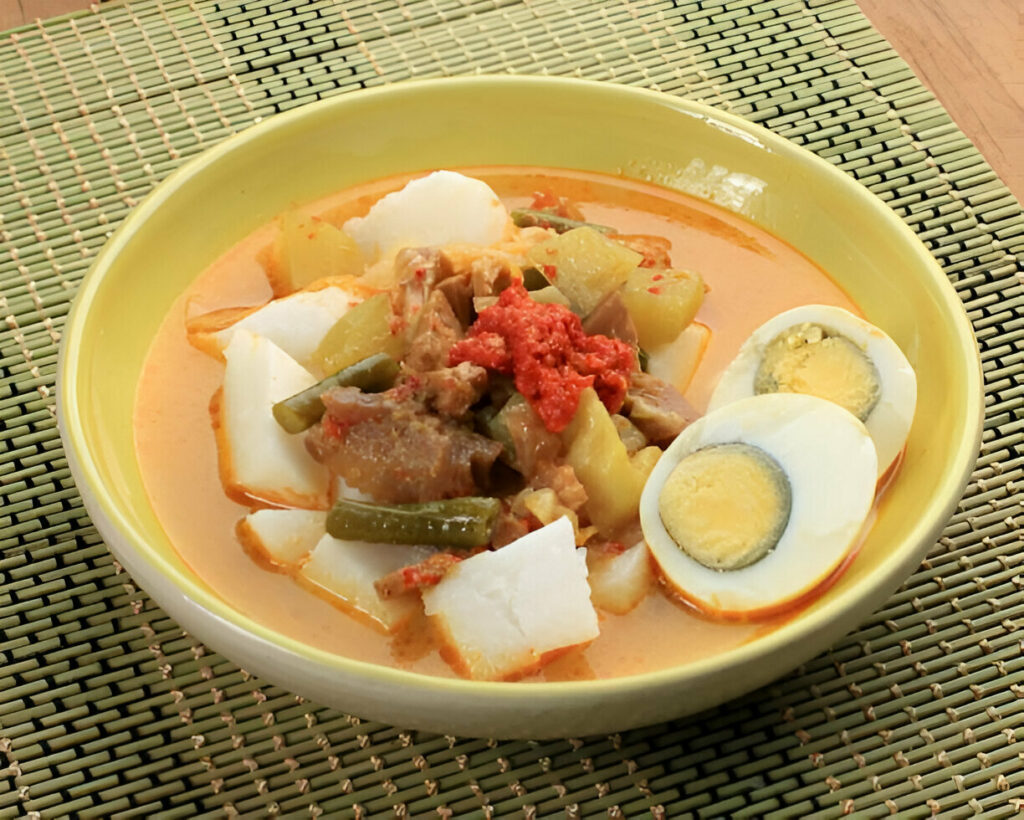
Ingredients Breakdown
The star of the vegetable medley lies in its diversity. Sengkuang brings a delicate crispness and a touch of earthiness. Round Chinese cabbage softens beautifully, absorbing the curry while lending sweetness. Long beans add a snap of texture, while carrots bring both color and subtle sweetness, rounding out the profile of the broth.
The coconut milk is what gives Lontong Sayur its creamy, luxurious character. Combined with chilli oil, ground coriander, and fish curry powder, it becomes a full-bodied broth that’s spiced yet smooth. The palm sugar and salt delicately balance out the richness, adding depth without overwhelming the palate.
The flavor foundation is built from the ground up—literally—with an anchovy-based paste. Blended together with shallots, garlic, lemongrass, and galangal, it transforms into a savory, umami-laced mixture that perfumes the entire dish as it cooks.
Layered on top are the essential accompaniments. Tau kwa, deep-fried until golden, adds substance and contrast. Ketupat, or compressed rice cakes, provide a satisfying chew that soaks up the curry. Hard-boiled eggs lend creaminess and richness, while a final topping of serunding adds a smoky crunch that ties the entire bowl together.
Step-by-Step Preparation Guide
Begin by blending anchovies, shallots, garlic, lemongrass, and galangal into a thick, aromatic paste. For the smoothest result, ensure the anchovies are patted dry and the lemongrass is finely sliced.
Heat oil in a deep pot and fry the blended paste until it’s deeply golden and fragrant. This step is essential—it unlocks the flavor base of the dish. Once aromatic, stir in ground coriander, fish curry powder, and bay leaves, letting the spices bloom in the oil to their fullest potential.
Add water and chilli oil, mixing thoroughly, and bring to a gentle boil. This creates the base for the curry broth. Once bubbling, toss in the turnip, cabbage, long beans, and carrots. Simmer until the vegetables reach your desired texture—tender but not overcooked, vibrant but cooked through.
Season the broth with palm sugar and salt to taste. If using, add ikan bilis powder to deepen the umami. Slowly stir in the coconut milk in a gentle stream, continuously stirring to avoid separation. Let the curry thicken slightly, then turn off the heat and stir in the deep-fried tofu pieces.
To serve, cut the ketupat into small cubes and place them in bowls. Ladle the steaming curry over the rice cakes, layer with halved hard-boiled eggs, and finish with a generous sprinkle of serunding. Serve immediately for the fullest experience.
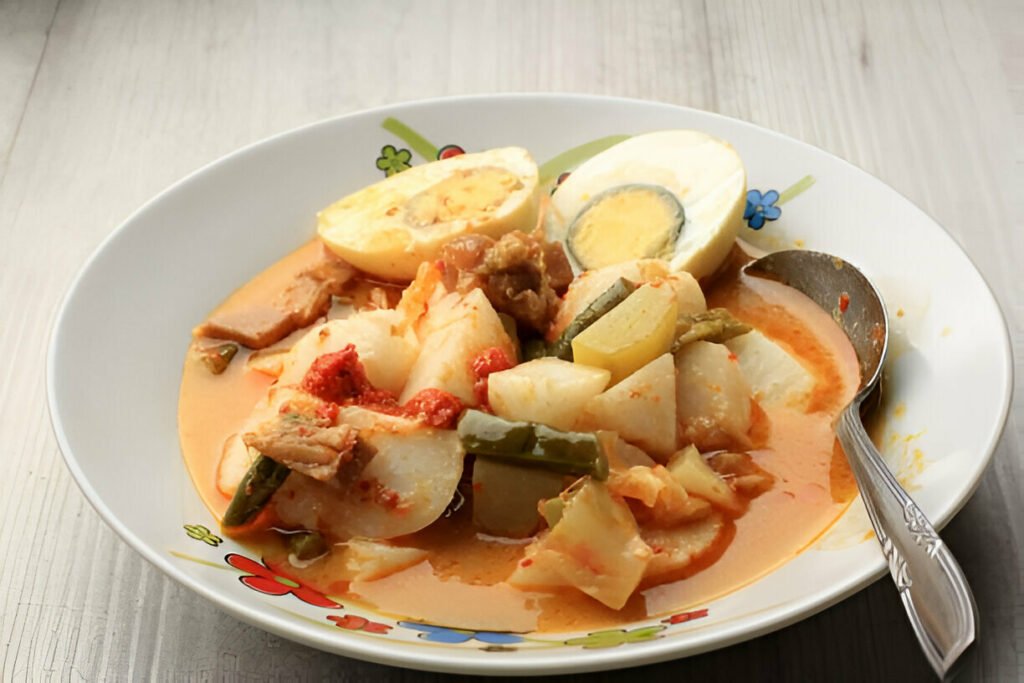
Recipe Tips
How to prevent the coconut milk from splitting:
Stir constantly while adding the coconut milk and avoid letting the curry come to a rolling boil after it’s been added. Simmer gently.
Timing the vegetables so they retain their texture:
Add sturdier vegetables like sengkuang and carrots first, followed by quick-cooking cabbage and long beans near the end.
Using store-bought ketupat or making your own:
Store-bought vacuum-packed ketupat works well, but homemade compressed rice offers fresher texture and flavor.
How to properly deep-fry tau kwa without it turning soggy:
Pat dry the tofu before frying and ensure the oil is hot enough—around 350°F (175°C). Fry until golden and drain on paper towels.
Adjusting spice levels for different heat tolerances:
Reduce or omit the chilli oil for a milder version, or add sambal on the side for those who want extra heat.
What to Serve With This Recipe
No bowl of Lontong Sayur is complete without a dollop of sambal. The fiery chili paste adds a kick that complements the creaminess of the curry and lifts the whole dish.
For added crunch, serve with crispy prawn crackers on the side. Their airy, salty crunch balances the softness of the rice cakes and vegetables.
To quench the heat and richness, pair this dish with a tall glass of iced sweet tea or chilled coconut water. The freshness cuts through the coconut broth perfectly.
A side of acar—pickled cucumbers and carrots in a sweet vinegar dressing—adds acidity and freshness, offering a zesty counterpoint to the warm, savory curry.
Frequently Asked Questions
Can I replace anchovies in the paste with another protein?
Yes, dried shrimp or a vegetarian-friendly option like miso paste can be used, though the flavor profile will change slightly.
How long can I store leftovers, and how should I reheat them?
Store the curry and toppings separately in the fridge for up to 3 days. Reheat the curry gently over low heat to avoid splitting the coconut milk.
Is there a vegetarian version of Lontong Sayur?
Absolutely. Omit anchovies and fish curry powder. Use mushroom or soy-based seasoning for depth, and swap serunding with a coconut or tempeh-based topping.
What if I don’t have ketupat—can I substitute with regular rice?
Yes. Use compacted jasmine rice or shape freshly cooked rice into squares and chill before slicing for a similar effect.
Can I freeze the curry base for future use?
Yes, the curry can be frozen without the coconut milk. Add the coconut milk only when reheating for best texture and consistency.
Creative Variations
Add tempeh, eggplant, or mushrooms to the vegetable mix for a plant-forward version with meaty texture and depth.
For added protein, stir in poached shrimp or shredded chicken just before serving—especially good for heartier appetites.
Use red curry paste in place of anchovy paste for a Thai-inspired spin on the broth. Adjust sweetness and salt to taste.
Top each bowl with toasted peanuts or crispy fried shallots to add crunch and a nutty note that cuts through the creaminess.
Lontong Sayur is a dish rich in layers—comforting yet complex, vibrant yet hearty. From its spicy-sweet coconut broth to the chewy rice cakes and bold toppings, every component comes together in perfect harmony. Whether served during festive occasions or enjoyed as a soul-soothing meal at home, it’s a dish that brings warmth and satisfaction to any table.
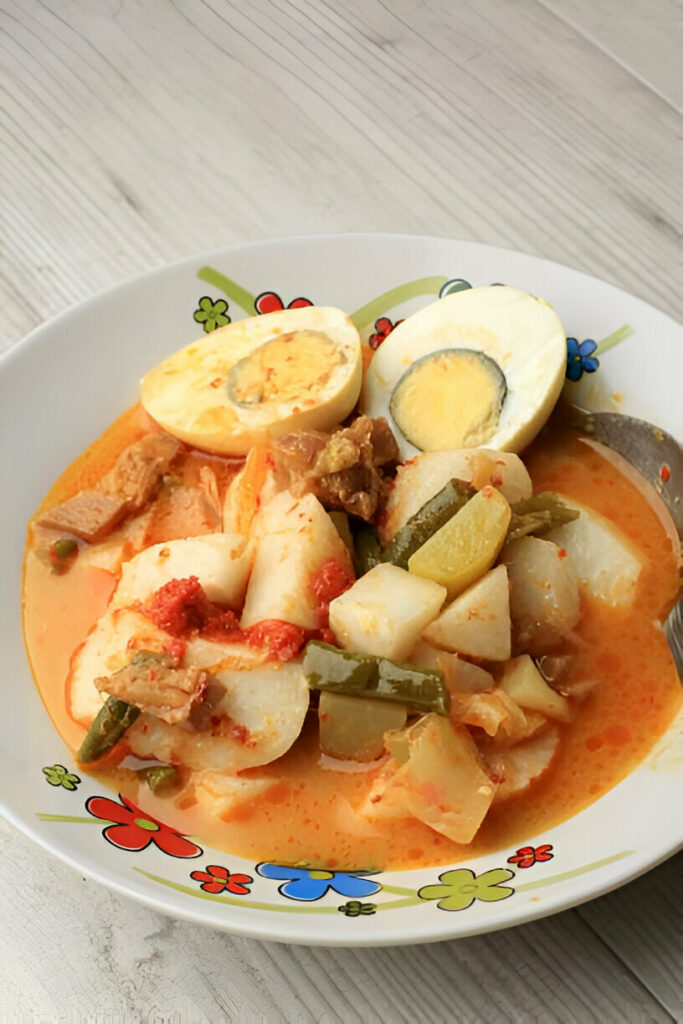
Ingredients
500ml coconut milk
500ml water
3 ketupat (compressed rice cakes)
6 hard-boiled eggs
3 pieces tau kwa (firm tofu), cut into triangles and deep-fried
250g sengkuang (jicama/turnip), peeled and julienned
400g round Chinese cabbage, chopped into bite-sized pieces
100g long beans, sliced diagonally
80g carrot, thinly sliced
60g serunding (spiced meat floss)
2 bay leaves
2 tablespoons chilli oil
1 tablespoon ground coriander
½ tablespoon fish curry powder
Palm sugar and salt, to taste
To blend for lontong paste:
150g anchovies
4 shallots
4 cloves garlic
1½ stalk lemongrass, thinly sliced
½ slice galangal
Instructions
Start by preparing the lontong paste. In a deep pot, heat a little oil and sauté the blended paste until it becomes aromatic and deeply golden.
Sprinkle in the ground coriander, fish curry powder, and bay leaves. Stir and let the spices bloom in the oil for about a minute.
Pour in the water followed by the chilli oil. Mix thoroughly and bring the mixture to a gentle boil, allowing the flavors to meld.
Add the turnip, cabbage, long beans, and carrot to the pot. Simmer until the vegetables soften to your preferred texture—whether slightly crunchy or tender.
Season the curry base with salt, palm sugar, and ikan bilis powder (optional) to enhance the umami notes. Slowly stir in the coconut milk while gently combining it with the soup. Continue stirring to prevent curdling.
Once the gravy thickens slightly and turns creamy, switch off the heat and stir in the fried tofu triangles.
To serve, slice the ketupat into bite-sized cubes and place them in a bowl. Pour the hot vegetable curry over the rice cakes, top with halved boiled eggs, and finish with a generous sprinkle of serunding. Add a side of sambal if desired, and serve the dish hot.

Lontong Sayur Recipe
Ingredients
- 500 ml coconut milk
- 500 ml water
- 3 ketupat compressed rice cakes
- 6 hard-boiled eggs
- 3 pieces tau kwa firm tofu, cut into triangles and deep-fried
- 250 g sengkuang jicama/turnip, peeled and julienned
- 400 g round Chinese cabbage chopped into bite-sized pieces
- 100 g long beans sliced diagonally
- 80 g carrot thinly sliced
- 60 g serunding spiced meat floss
- 2 bay leaves
- 2 tablespoons chilli oil
- 1 tablespoon ground coriander
- ½ tablespoon fish curry powder
- Palm sugar and salt to taste
To blend for lontong paste:
- 150 g anchovies
- 4 shallots
- 4 cloves garlic
- 1½ stalk lemongrass thinly sliced
- ½ slice galangal
Instructions
- Start by preparing the lontong paste. In a deep pot, heat a little oil and sauté the blended paste until it becomes aromatic and deeply golden.
- Sprinkle in the ground coriander, fish curry powder, and bay leaves. Stir and let the spices bloom in the oil for about a minute.
- Pour in the water followed by the chilli oil. Mix thoroughly and bring the mixture to a gentle boil, allowing the flavors to meld.
- Add the turnip, cabbage, long beans, and carrot to the pot. Simmer until the vegetables soften to your preferred texture—whether slightly crunchy or tender.
- Season the curry base with salt, palm sugar, and ikan bilis powder (optional) to enhance the umami notes. Slowly stir in the coconut milk while gently combining it with the soup. Continue stirring to prevent curdling.
- Once the gravy thickens slightly and turns creamy, switch off the heat and stir in the fried tofu triangles.
- To serve, slice the ketupat into bite-sized cubes and place them in a bowl. Pour the hot vegetable curry over the rice cakes, top with halved boiled eggs, and finish with a generous sprinkle of serunding. Add a side of sambal if desired, and serve the dish hot.











